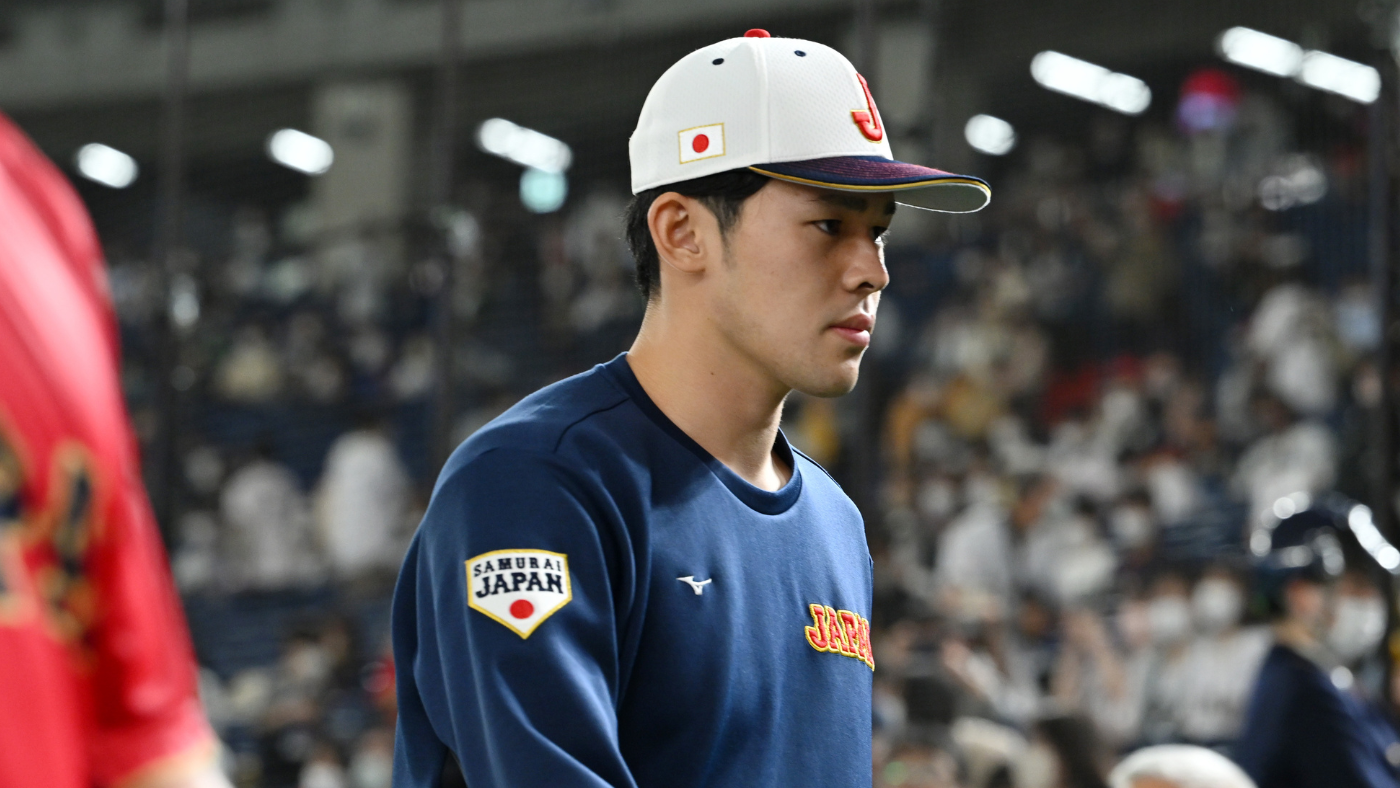
Japanese ace Roki Sasaki made his free-agent decision on Friday, agreeing to join the World Series champion Los Angeles Dodgers. The Dodgers were long seen as the favorites for services of the 23-year-old pitching phenom, and he’ll be joining a star-studded roster that features Shohei Ohtani and Yoshinobu Yamamoto, his teammates on Japan’s title-winning 2023 World Baseball Classic team.
Unlike Ohtani and Yamamoto — who both signed in December 2023 for more than a combined $1 billion in total money — Sasaki will not be inking an eye-popping contract this winter. Contract terms were not immediately available after he made his announcement, but Sasaki’s deal will be capped by MLB rules.
By making the jump to the majors this year, Sasaki was always going to end up underpaid relative to his ability. (That is, in fact, why he ranked lower on my free-agent rankings, based largely on expected average annual value.) MLB’s agreement with Nippon Professional Baseball requires players to clear certain age and service time thresholds to be classified as unrestricted free agents — that way, NPB doesn’t lose every promising youngster to MLB before they’ve carved out some kind of career in Japan.
Sasaki, who met neither requirement, was designated instead as an amateur free agent. In turn, that limited his earning potential to whatever teams could offer from their international amateur bonus pools. Sasaki is signing a minor-league contract and will receive no more than an $8.24 million signing bonus with L.A. That is the Dodgers’ original $5,146,200 bonus pool plus the additional 60% each team is allowed to acquire via trades. L.A. would need to acquire that money in a trade by next Thursday (Jan. 23) if they’re going to raise Sasaki’s signing bonus.
Like any other rookie, Sasaki will be under team control for six years and will be arbitration eligible starting in the 2028 season. Ohtani, who was an international free agent when he signed with the Angels in 2018, got a $2.315 million signing bonus and then made roughly $40 million in his first six years in the majors.
Still, it’s a fair to wonder: just how much would he have received as a true free agent?
The obvious guidepost, in my mind and in the opinion of the front-office personnel I polled on this subject, was the 12-year, $325 million pact inked last winter by Yamamoto with the Dodgers. Like Sasaki, Yamamoto was transferring at a time when he was considered the best pitcher in the world not already under MLB employment. There are enough key differences between the two, however, to think that teams would not have simply copied and pasted Yamamoto’s terms in their offers to Sasaki.
While all pitchers carry their share of risk, it’s fair to write that Sasaki feels more volatile than Yamamoto did — and that said volatility could have shifted his contract in either direction.
The argument for Sasaki receiving more than Yamamoto boils down to his youth and upside. Sasaki is more than three years Yamamoto’s junior. Even so, his age didn’t stop him from posting better rate statistics than many of his peers who have made the move from NPB to MLB. Credit that to an explosive arsenal that, at its best, features a high-octane fastball and swing-and-miss splitter.
Most front offices these days will at least reference predictive modeling when they’re making personnel decisions. It stands to reason that those models would view Sasaki’s extreme youth and performance as major positives, giving teams all the more reason to offer him a massive long-term contract to serve as their ace.
At the same time, there is some potential downside with Sasaki that would have been baked into negotiations and may have had his contract come in a little lower than Yamamoto’s mark.
Again, all pitchers are risky, but he takes it to another level. Whereas Yamamoto had thrown at least 170 innings three years in a row before his posting, Sasaki has never even cleared 130 frames. Sasaki was limited to just 111 innings last season because of an oblique injury and shoulder fatigue (with the latter sapping his velocity). How, precisely, Sasaki’s body holds up to the MLB schedule (where pitchers are tasked with throwing more than once a week) is anyone’s guess.
Sasaki’s riskiness extends beyond his spotty durability. A few evaluators raised concerns about his fastball shape and its dead zone properties — essentially, it moves the same amount horizontally and vertically, making it easier for the opposition to track. Of course, there are rival schools of thought on how much that particular trait matters. One high-ranking evaluator pointed to Paul Skenes as an example of pitchers being able to overcome a dead-zone fastball if they throw the ball hard enough — something that has worked in Sasaki’s favor more often than not.
From my perspective, Sasaki’s durability concerns are more meaningful than any skill-related worries. Unfortunately, they also make it tougher to deliver a high-confidence estimate on his earning potential. If I had to guess, he likely would have cleared the $300 million mark in total possible money. I do think it’s likely teams would have attempted to hedge against an injury by building in escalators and other clauses that would have protected them if he missed significant time.
Of course, it takes only one team to go above and beyond to change the shape of the bidding. Whether or not that would have happened with an unrestricted Sasaki free agency will remain unknown. All the same, it does seem realistic to conclude that his designation as an amateur cost him hundreds of millions of dollars.

